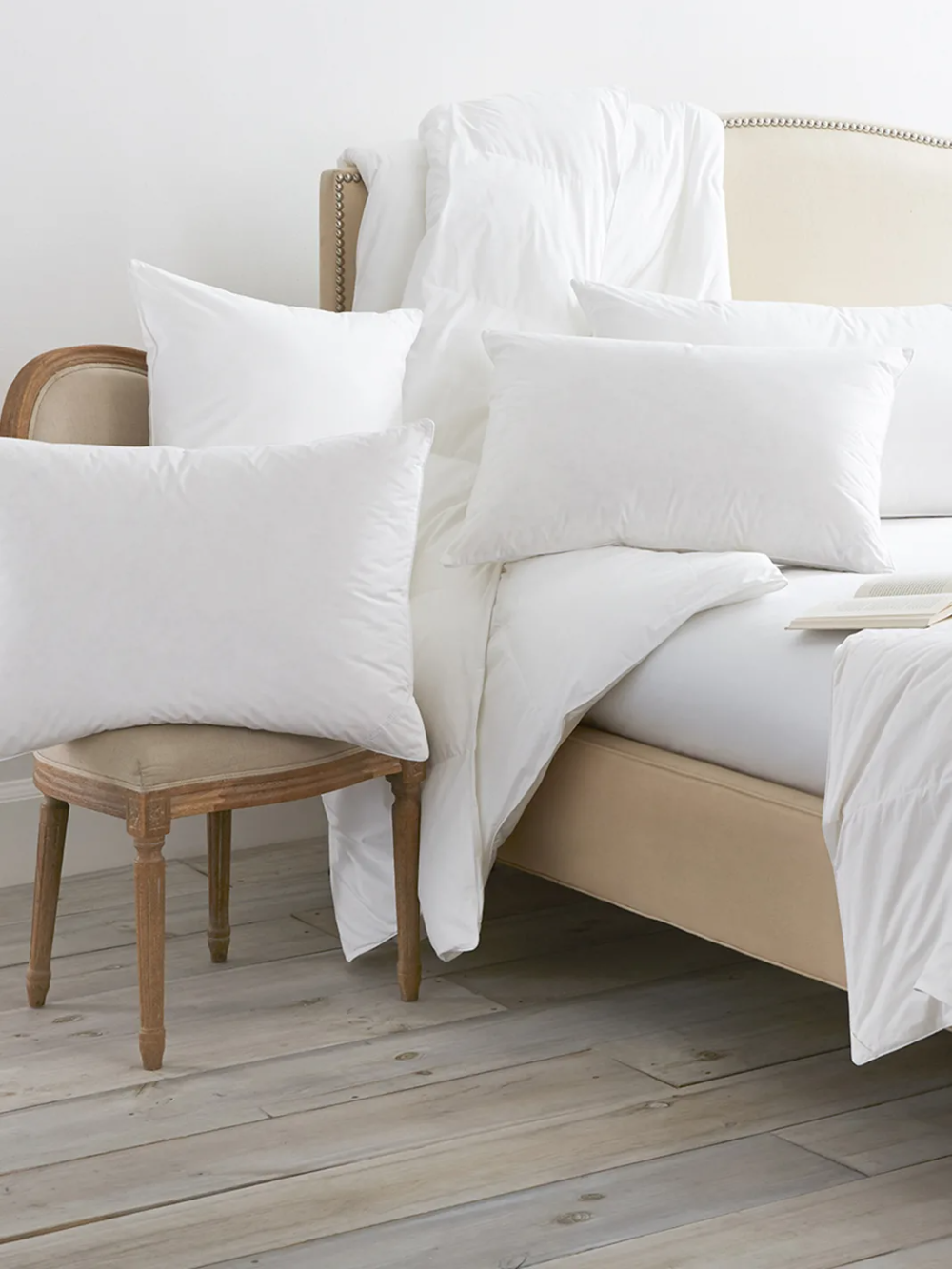Thinking about down pillows probably conjures images of luxe hotel bedding — or that scene in The Holiday when Kate Winslet’s character dives into her host Cameron Diaz’s bed and sinks into the many pillows upon it. But anyone who has rested their head on a down pillow knows it’s possible to get that sumptuous experience in your own home, too. Many folks opt for down pillows because they are light, fluffy, and breathable. But as Keith Cushner, the founder of sleep-product review site Tuck, explains, their form can also serve many functions when it comes to getting a better night’s sleep. “If you know that your head gets really hot, or your ear is really sensitive, or you’re sleeping on your side and you wake up with the equivalent of pressure points goose down ball on your head, then you’re probably want to go with something a lot softer or plusher,” like down, “versus any of the harder pillows,” he says.
Cushner and the nine other experts we spoke to say that, when shopping for down pillows, you should pay attention to three things: Loft (or the height of a pillow when it lays flat on a bed), fill composition (the type of down or feathers filling a pillow), and fill ratio (the proportions of whatever’s filling it). Loft usually correlates to what’s called a pillow’s fill power. Mark Wood, the CEO of National Pool Fences, says to think of fill power as “the fluffiness of a pillow.” Generally, pillows with a higher fill power will be loftier, more insulated, and lighter. Wood says that “650 fill power is a great starting point for the average person,” but notes you can get pillows that go up to 800 fill power. Most down pillows are typically filled with goose or duck down in combination with feathers, which is why all-down pillows are considered even more luxurious and usually fall on the higher end of the price spectrum. According to commercial real-estate investor Marina Vaamonde, the founder of real-estate website PropertyCashin, “the filling composition is the best indicator of a down pillow’s durability: The purer the down composition of a pillow, the longer it will last.” Certified sleep-science coach Laura Bates, a co-founder of Comfybeddy, advises looking closely at any pillow’s fill composition because brands might call a pillow down but fill it with down and feathers, which some people may want to avoid because, as she notes, “feathers can often poke through the pillow cover.”
Conveniently, down pillows can work for all types of sleepers, according to our experts. No matter if you sleep on your side, stomach, or back, McKenzie Hyde, a sleep-science coach with Amerisleep, says the right down pillow will “provide full support in the form of reinforced firmness to fill the spaces between the shoulder and neck during slumber.” Like mattresses, many down pillows come in different firmness levels. Melissa Wagner, of online interior design service Havenly’s creative and design team, explains the firmness levels correspond to different sleeping positions. “A firm down pillow will support a side-sleeping habit; a soft one is great for belly sleeping; and a medium support is best for people who sleep on their backs,” she says. If you change positions in your sleep, “a medium-density option that isn’t too firm or soft” should be plenty versatile, according to Johanna Lundgren, a director of product and design at vacation-rental service Jurny.
